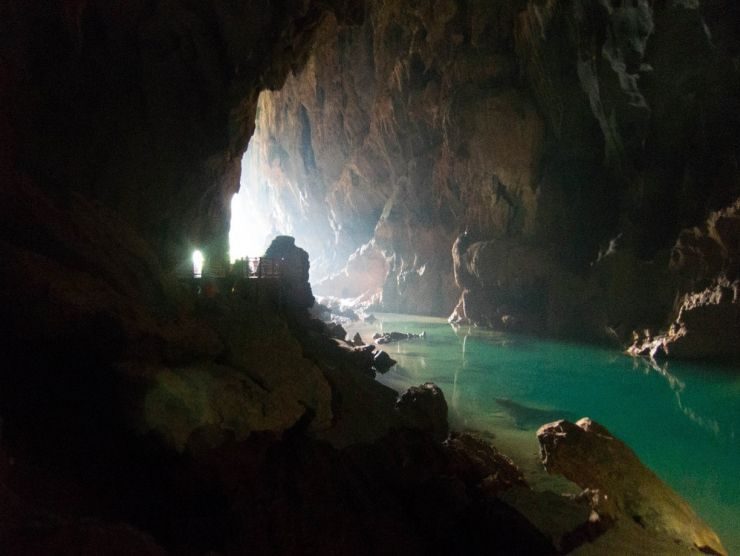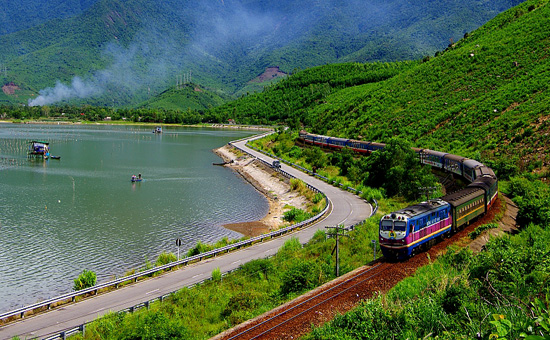Ho Chi Minh trail
The Hồ Chí Minh trail (also known in Vietnam as the “Trường Sơn trail”) was a logistical system that ran from the North Vietnam to the South Vietnam through the neighboring kingdoms of Laos and Cambodia.
It was named by the Americans after North Vietnamese president Hồ Chí Minh. Although the trail was mostly in Laos, the communists called it the Trường Sơn Strategic Supply Route (Đường Trường Sơn), after the Vietnamese name for the Annamite Range mountains in central Vietnam. According to the United States National Security Agency’s official history of the war, the Trail system was “one of the great achievements of military engineering of the 20th century.”
The Ho Chi Minh Trail was not just one trail but a series of trails. The Ho Chi Minh Trail was used by the North Vietnamese as a route for its troops to get into the South. They also used the trail as a supply route – for weapons, food and equipment. The Ho Chin Minh Trail ran along the Laos/Cambodia and Vietnam borders and was dominated by jungles. In total the ‘trail’ was about 1,000 kilometres in length and consisted of many parts.
“There were thousands of trails, thousands of rest spots along the way where enemy troops could seek refuge and build up.”
The ‘trail’ consisted of dummy routes that served the only purpose of confusing the Americans but was, in places, 80 kilometres (50 miles) wide. It is thought that up to 40,000 people were used to keep the route open. The natural environment gave the trail excellent cover as the jungle could provide as much as three canopies of tree cover, which disguised what was going on at ground level. The American response to this was to use defoliants – the most famous being Agent Orange – to kill off the greenery that gave cover to those using the trail. However, while large areas of jungle were effectively killed off, the task was too great and the Ho Chi Minh Trail was used for the duration of the war against the Americans in South Vietnam.
One way for the Americans to counter the Ho Chi Minh Trail was to build large bases near to it – Khe Sanh was one of these. From these large bases patrols were sent out in an effort to intercept anyone using the route. Regardless of this, it does seem that the task was simply too great for the Americans. Whereas the trail was based on deception and fluidity, the military bases built by the US were static. Therefore, once patrols left these bases they were by themselves. While they could be supported by air, there would always be a time delay between combat on the ground and the arrival of air support. By the very nature of guerrilla warfare, this gave the North Vietnamese the advantage as they had the ability to disappear into the jungle.
Ho Chi Minh Trail, elaborate system of mountain and jungle paths and trails used by North Vietnam to infiltrate troops and supplies into South Vietnam, Cambodia, and Laos during the Vietnam War. The trail was put into operation beginning in 1959, after the North Vietnamese leadership decided to use revolutionary warfare to reunify South with North Vietnam. Accordingly, work was undertaken to connect a series of old trails leading from the panhandle of North Vietnam southward along the upper slopes of the Annamese Cordillera (French: Chaîne Annamitique; Vietnamese: Truong-Son) into eastern Laos and Cambodia and thence into South Vietnam. Starting south of Hanoi in North Vietnam, the main trail veered southwestward to enter Laos, with periodic side branches or exits running east into South Vietnam. The main trail continued southward into eastern Cambodia and then emptied into South Vietnam at points west of Da Lat.
The network of trails and volume of traffic expanded significantly beginning in the 1960s, but it still took more than one month’s march to travel from North to South Vietnam using it. Traffic on the trail was little affected by repeated American bombing raids. Efforts were gradually made to improve the trail, which by the late 1960s could accommodate heavy trucks in some sections and was supplying the needs of several hundred thousand regular North Vietnamese troops active in South Vietnam. By 1974, the trail was a well-marked series of jungle roads (some of them paved) and underground support facilities such as hospitals, fuel-storage tanks, and weapons and supply caches. The Ho Chi Minh Trail was the major supply route for the North Vietnamese forces that successfully invaded and overran South Vietnam in 1975.







